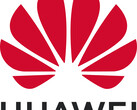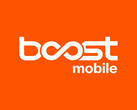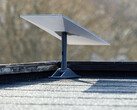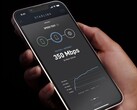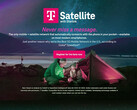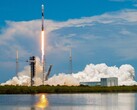The leading mobile cellular technology provider in Ukraine - Kiyvstar - is becoming the first major carrier outside the US to adopt Starlink's cell service for regular handsets.
It has signed an agreement with SpaceX to launch a mobile Starlink service by the end of the year. Just as with T-Mobile in the US, the service will first begin with text messaging and chat apps like Signal or WhatsApp, and will then provide satellite Internet and voice services to phones in Ukraine in early 2026.
Initial tests of the carrier's SIM card compatibility with Starlink's direct-to-cell satellite constellation have been already done in the US, and messaging is now being tested in Ukraine.
"The planned launch of D2C services with support for SMS and over-the-top (OTT) messaging is scheduled for Q4 2025 and is expected to further enhance Kyivstar’s ability to provide essential connectivity for Ukraine, especially in areas impacted by infrastructure damage and rural regions, as well as during emergencies," says Kyivstar's parent company.
In the US, the T-Satellite with Starlink service will be provided for $10/month starting on July 23, both on older phones and on newer handsets like the iPhone 16 Pro, but it is not clear at what price it will launch for Ukrainian users.
Kiyvstar is now the first carrier in Europe to become a client of Starlink's direct cell phone offering, as it wants "to provide uninterrupted communication to our customers, regardless of circumstances." The service is an option to provide connectivity in regions hit by natural or man-made disasters, as it doesn't require cell tower infrastructure to function, as the signal gets beamed directly from space.
This also means that mobile carrier Starlink is much slower and with limited functionality than the terrestrial services, at least at first. In the US, T-Mobile will start with text messaging in July, then expand to data via certified apps like X or WhatsApp only in October.
SpaceX is planning to start launching its V3 satellites that offer 10x the capacity of the current crop in 2026, so the direct-to-cell constellation should become faster and with more disposable bandwidth then, too.









